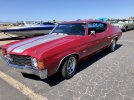mmcartalk
Expert
- Messages
- 4,155
- Reactions
- 2,675
MM Retro-Write-Up: 1970 Chevy Chevelle SS396.
IN A NUTSHELL: The “In” American Muscle-Car of the late 1960s.
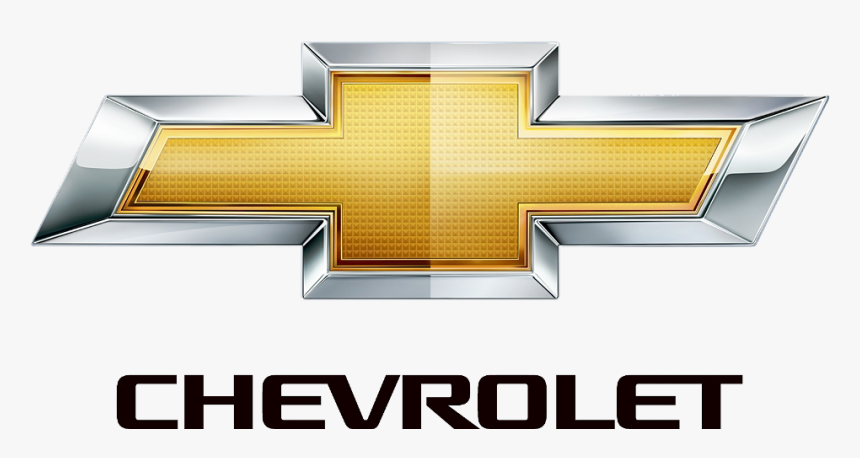

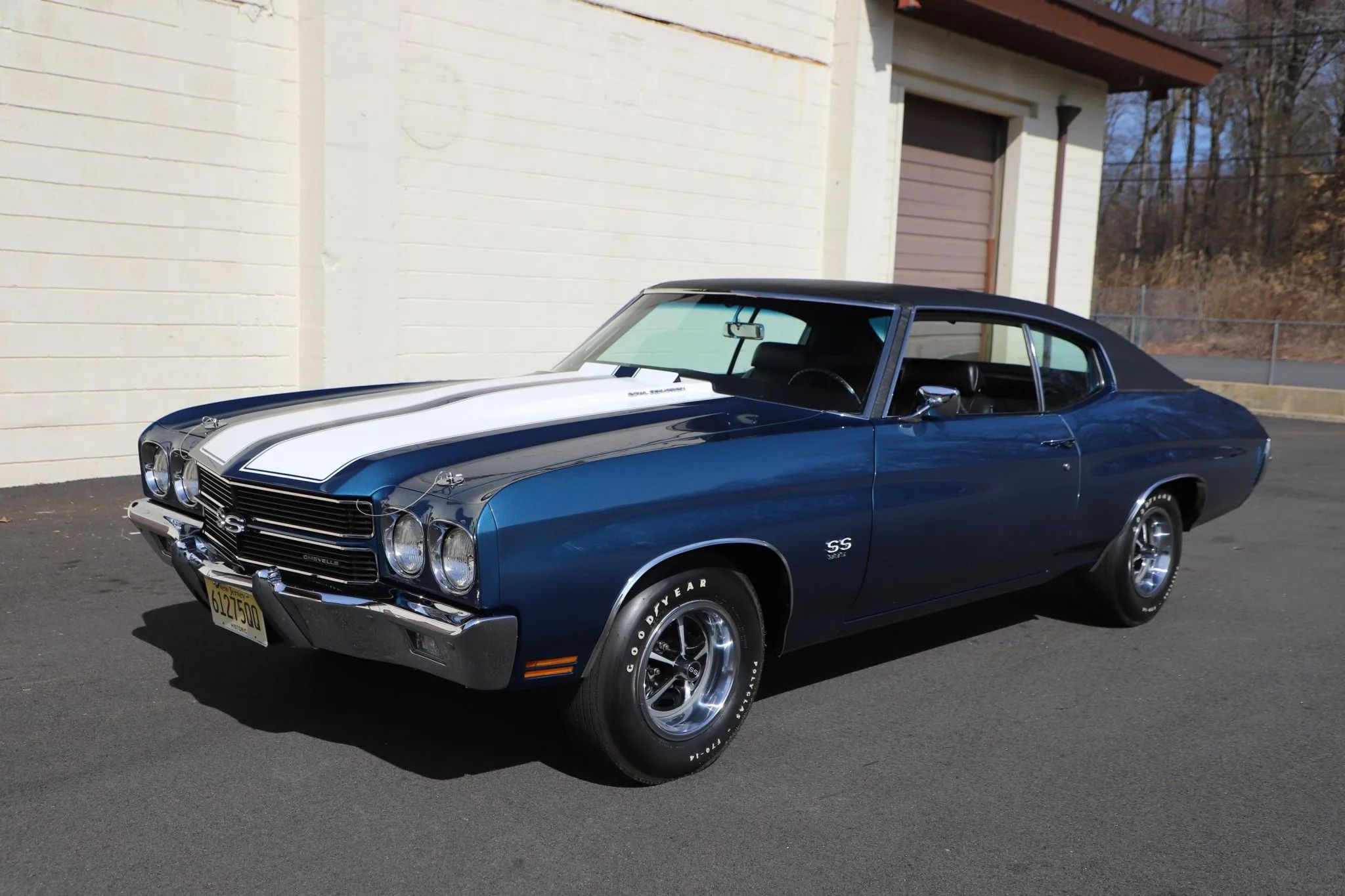
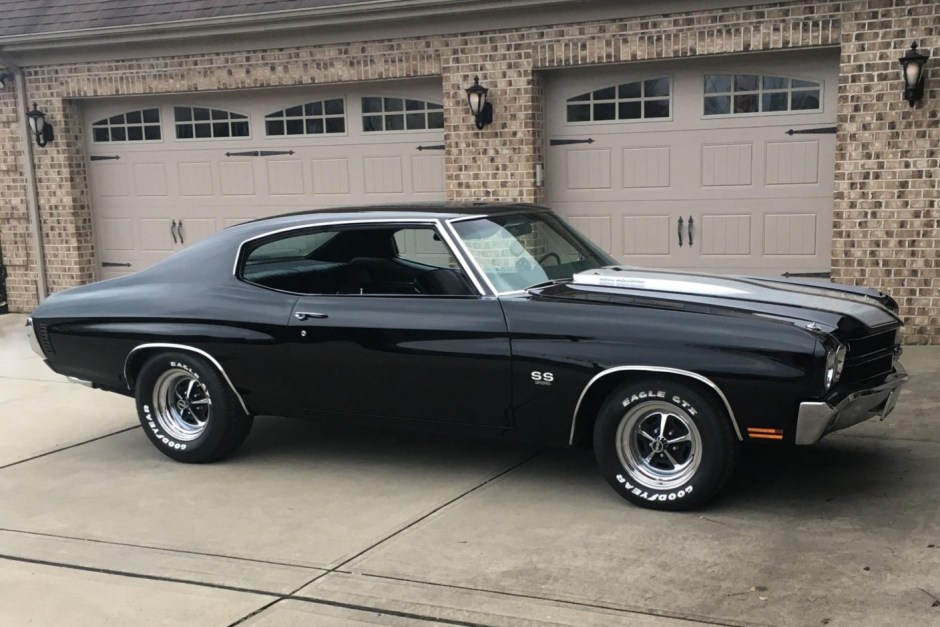
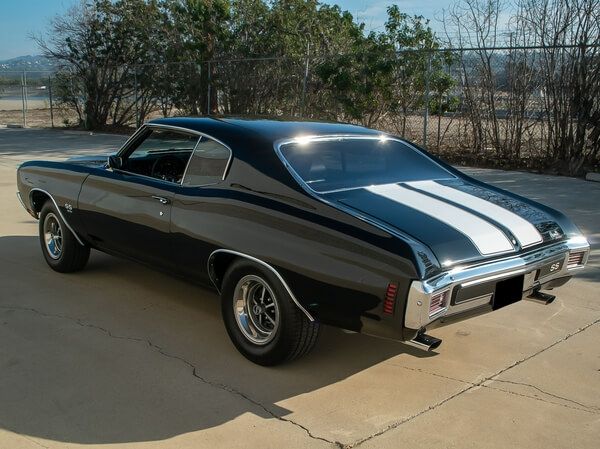
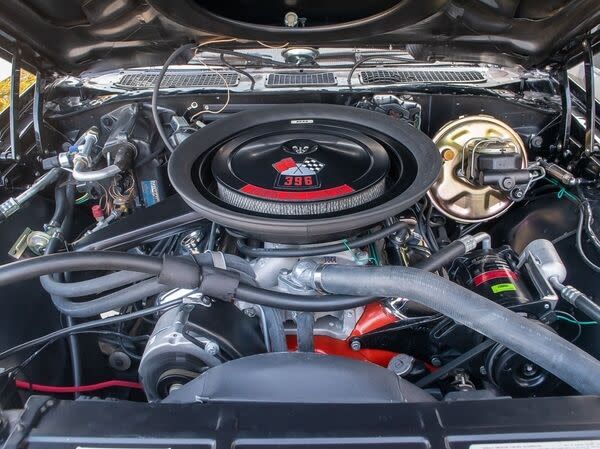
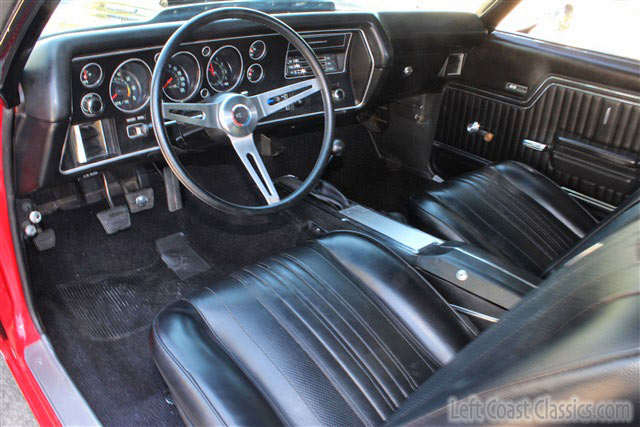
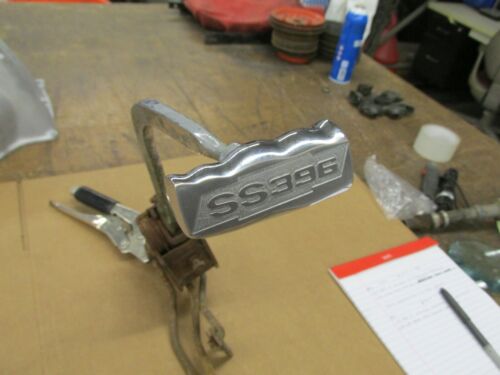
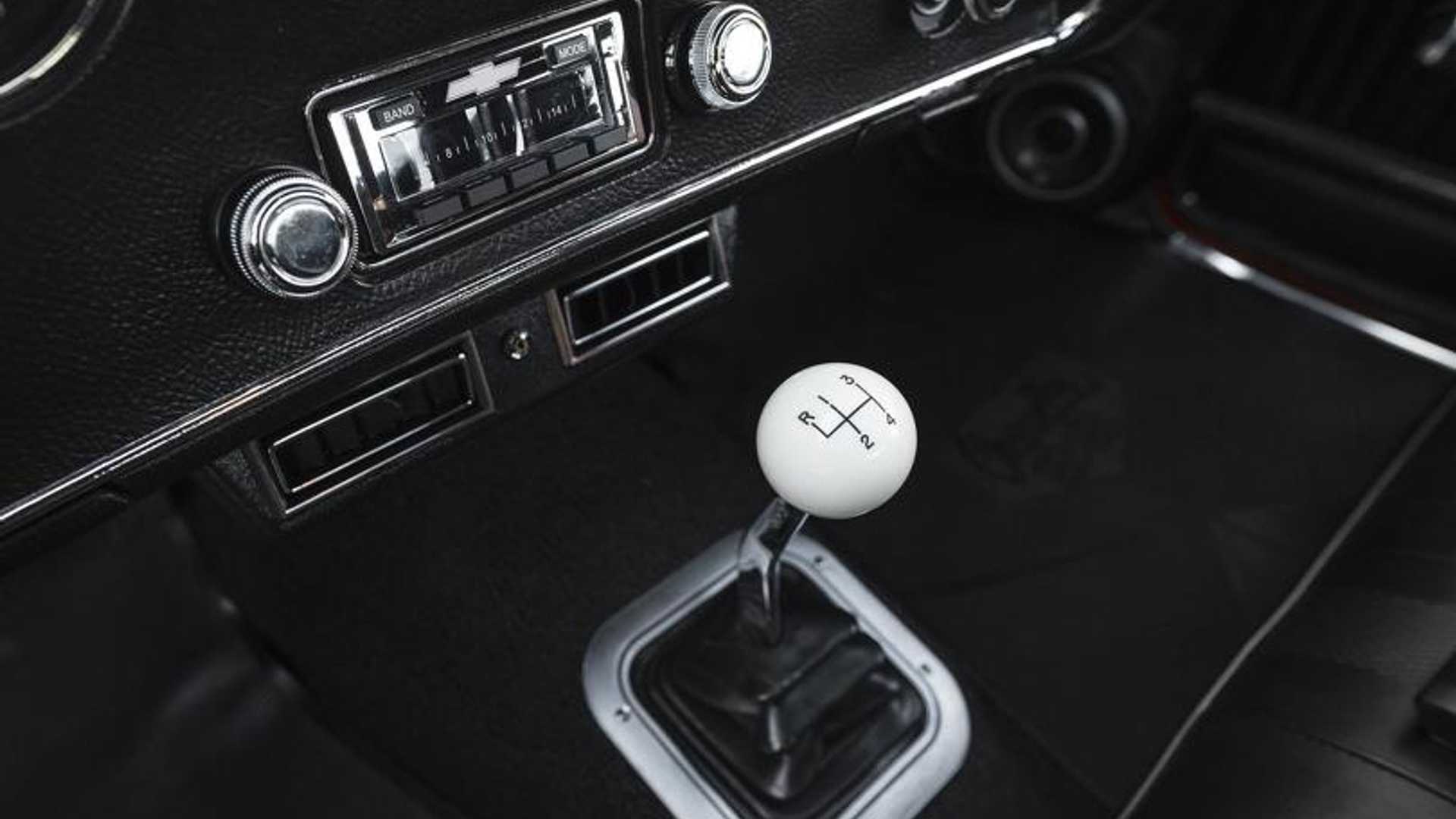
It is no secret that, even as a teen-ager back in the late 1960s, I liked the big American full-size upmarket/luxury cars as much, if not more than the classic muscle-cars of the period. I always had respect for driving safety, and was generally not one for aggressive or careless driving, drag-racing, trying to show off, or prove things to my friends behind the wheel. Indeed, my school actually lost a few of our fellow students to exactly that kind of nonsense on the road. Those safe-driving movies/films that were shown in schools back then meant EXACTLY what they said, although too many students simply dismissed them out of ignorance, egotism, or peer-pressure.
Nevertheless, even for me and my attraction to luxo-mobiles, I still, as a more or less normal teen-ager, did have some attraction to the muscle cars of the time. Even aside from the drivetrains, I thought they looked cool with their bright colors, body-stripes, Cragar Mag-wheels with red-striped Tigerpaw tires, T-Handled Hurst 4-speed shifters, hood scoops, and, in the case of some of the Chrysler products, cartoon-graphics and gimmicky horns.
And, in safe and secure areas on roads unclogged with traffic, when I got a chance to drive or sample some of these muscle-cars, cars, I was not adverse to punching it a little with my right foot, although I did not believe in abusing the drivetrains or doing burnouts…I hated the thought of abusing a vehicle. And it also must be noted that these cars had a ton of torque from their big-block V8s and were unbeatable in a straight line, but, even with relatively heavy-duty suspensions, were almost useless if you had to do any serious cornering (and that’s partly what killed a number of people). That was generally because of the slow recirculating-ball steering systems of the period (rack and pinion would not come till later), which, even with power-assist (and not all muscle-cars had the power-assist option), made most of the muscle cars sluggish in turns. The rear-drive set-up also meant they didn’t always track well even in a straight line and required a lot of small steering corrections. There were a few exceptions to that rule….First, Chevy’s Corvette and Ford’s Shelby A/C Cobra, which were sports-cars and a little more responsive to the steering. Second, the torsion/leaf-suspension Chrysler muscle-cars, in which the suspension set-up handled a little better than Ford and GM’s coil-springs, but were still hampered by a lousy power-steering system with zero road feel. All but the Chrysler products were body-on frame…..the Chrysler products were unibody with a front subframe.
So, of course, at the time, the students I went to high school with (both here in the Virginia D.C. suburbs and in Austin, TX) all had their likes/dislikes of certain vehicle-brands and models…..much of which was based more on pre-conceived notions and image than on facts, although due to our immaturity, we did not always recognize that until later. Americans, in general, including high school kids, were much more fiercely brand-loyal in those days than they are today….today you see that loyalty mostly with full-size pickups and not much else. Nevertheless, one of my strong points at that age (besides common sense behind the wheel) was that I had a talent for evaluating a car and noting how well it was designed/assembled and drove. And vehicles had real personality in those days, and often differed from each other significantly..it was not like today with its cookie-cutter designs/engineering/drivability. Indeed (and I’m not saying this to brag or boast, but to state a fact), even blindfolded, I could tell when I was in an average Ford, GM, Chrysler (and sometimes AMC) product simply by sense and feel….the sound of doors closing, the sound of engines starting, the feel (or no feel) of the power steering, the feel/texture of the interior trim, the sound of exhausts, and the way the controls worked. Here, GM’s famous Body by Fisher, general fit/finish, and interior detail excelled above the others (although GM’s exterior acrylic-lacquer paint was garbage) and the Chrysler products, except for their strong and durable drivetrains, lagged significantly behind…..with Ford products somewhere in between.
So, not surprisingly, students were constantly trying to prove that their own favorite brands and cars were better than somebody else’s (sometimes with tragic results). As for me, I had no clear favorites, although I liked the Chrysler drivetrains and torsion-bar handling, the overall quality and careful-assembly of GM products apart from the paint, and the Ford products for their excellent paint-jobs and superb (for the period) brakes which were head and shoulders above most brakes of the time.
But, to get to the main point in this write-up, one mid-sized muscle car of the period, both here in in Austin, seemed, in particular, to stand out to a lot of students…Chevy’s Chevelle SS396. It picked up a lot of fans among my schoolmates, and it was probably not difficult to see why. While in production from 1963 to 1977, the Second-Generation 1968-1972 models, IMO, were clearly the best-engineered and most pleasant song the Chevelles to own and drive (they were severely cheapened and redesigned in 1973), and, of those 2nd-Generation models, I thought (and many agree) that, like with Pontiac’s sister 1970 GTO, the 1970 Chevelle, in particular, with its distinct headlight-styling, looked the best. The “SS” designation meant “Super-Sport”….Chevy-Speak for its performance-oriented line. The SS package, of course, was available on several different Chevrolet models, including the Nova, El Camino, Chevelle, and Impala (the Impala SS was very popular in the early-mid 1960s)….one of my schoolmates had a new 1969 Nova SS, which, all else equal, was faster and more nimble than the Chevelle because it was smaller and lighter. In that generation of Chevelle, TEN different engines (yes, you heard that right) and four different transmissions were offered…the one most popular with my classmates was the SS 396, with its 396 cubic-inch (6.5L) V8 and 4-speed Hurst T-shifter. SS models started out with the 350 (5.7L) V8, and the 396 was the first step up. It produced 375 HP and 415 Ft-lbs. of torque. This was considered the “In” car to have, even though a few special-order models with larger 400, 402, 427, and 454 (7.4L) V8s were produced The 454 was probably overkill (500 ft-lbs. of torque, about equal to Chrysler’s dual-quad 426 Hemi), and was actually too big for this car in several ways. I myself liked the concept and execution of the Plymouth Road Runner and Dodge Super Bee more (the Plymouth muscle-cars of the time were called “Rapid-Transit” and the Dodges “Scat-Pack”) with their pastel colors, cartoon- graphics/decals, and the Beep-Beep horn, but, despite their excellent and strong powertrains, they couldn’t hold a candle to the (then) carefully-built GM cars in overall quality. The Chevelle had quite-handsome lines, the Body By Fisher, nice hardware, and careful workmanship/assembly of the rest of the GM line……and, unfortunately, also GM’s lousy Acrylic-Lacquer paint that faded and oxidized within a year if you didn’t keep it waxed. GM’s paint didn’t really improve much until clearcoat was introduced in the late 1980s.
Despite my noted attraction to Plymouth’s Road Runner and its cartoon-like personality, I had a lot of respect for all of the mid-size GM muscle-cars of the time, and actually would have preferred one to the GM products….or one of the Ford or Mercury Torino/Cyclone offerings with the 390 engine if I wanted excellent paint or excellent brakes. But, unfortunately, I didn’t have much of a job or income in those days (that would come several later with my Federal career) and simply could not afford one of those muscle-cars brand-new. And, sure enough, no sooner had I gotten out of high school 1970/71) and started to work, when the American muscle-car scene dried up from downsized/de-powered engines, emission controls, higher-cost low or no-lead fuel, CAFE regulations, increasingly-expensive insurance from the high level of accidents/injuries/deaths in those muscle-cars, and a general shift of young people away from factory hot-rods to customized vans and smaller/lighter cars for fuel economy. The original Muscle-Car Age was lost, would not rise again until about 40 years later with vastly different technology and engineering-processes. And, I more or less forgot about them myself…as I floated and cruised down the road in the big, plush, pillow-soft comfortable Buick Electra 225 (Deuce-and a Quarter) I had in college as a used car.
And, as Always, Happy-Vehicle-Memories.

MM
__________________

DRIVING IS BELIEVING

IN A NUTSHELL: The “In” American Muscle-Car of the late 1960s.








It is no secret that, even as a teen-ager back in the late 1960s, I liked the big American full-size upmarket/luxury cars as much, if not more than the classic muscle-cars of the period. I always had respect for driving safety, and was generally not one for aggressive or careless driving, drag-racing, trying to show off, or prove things to my friends behind the wheel. Indeed, my school actually lost a few of our fellow students to exactly that kind of nonsense on the road. Those safe-driving movies/films that were shown in schools back then meant EXACTLY what they said, although too many students simply dismissed them out of ignorance, egotism, or peer-pressure.
Nevertheless, even for me and my attraction to luxo-mobiles, I still, as a more or less normal teen-ager, did have some attraction to the muscle cars of the time. Even aside from the drivetrains, I thought they looked cool with their bright colors, body-stripes, Cragar Mag-wheels with red-striped Tigerpaw tires, T-Handled Hurst 4-speed shifters, hood scoops, and, in the case of some of the Chrysler products, cartoon-graphics and gimmicky horns.
And, in safe and secure areas on roads unclogged with traffic, when I got a chance to drive or sample some of these muscle-cars, cars, I was not adverse to punching it a little with my right foot, although I did not believe in abusing the drivetrains or doing burnouts…I hated the thought of abusing a vehicle. And it also must be noted that these cars had a ton of torque from their big-block V8s and were unbeatable in a straight line, but, even with relatively heavy-duty suspensions, were almost useless if you had to do any serious cornering (and that’s partly what killed a number of people). That was generally because of the slow recirculating-ball steering systems of the period (rack and pinion would not come till later), which, even with power-assist (and not all muscle-cars had the power-assist option), made most of the muscle cars sluggish in turns. The rear-drive set-up also meant they didn’t always track well even in a straight line and required a lot of small steering corrections. There were a few exceptions to that rule….First, Chevy’s Corvette and Ford’s Shelby A/C Cobra, which were sports-cars and a little more responsive to the steering. Second, the torsion/leaf-suspension Chrysler muscle-cars, in which the suspension set-up handled a little better than Ford and GM’s coil-springs, but were still hampered by a lousy power-steering system with zero road feel. All but the Chrysler products were body-on frame…..the Chrysler products were unibody with a front subframe.
So, of course, at the time, the students I went to high school with (both here in the Virginia D.C. suburbs and in Austin, TX) all had their likes/dislikes of certain vehicle-brands and models…..much of which was based more on pre-conceived notions and image than on facts, although due to our immaturity, we did not always recognize that until later. Americans, in general, including high school kids, were much more fiercely brand-loyal in those days than they are today….today you see that loyalty mostly with full-size pickups and not much else. Nevertheless, one of my strong points at that age (besides common sense behind the wheel) was that I had a talent for evaluating a car and noting how well it was designed/assembled and drove. And vehicles had real personality in those days, and often differed from each other significantly..it was not like today with its cookie-cutter designs/engineering/drivability. Indeed (and I’m not saying this to brag or boast, but to state a fact), even blindfolded, I could tell when I was in an average Ford, GM, Chrysler (and sometimes AMC) product simply by sense and feel….the sound of doors closing, the sound of engines starting, the feel (or no feel) of the power steering, the feel/texture of the interior trim, the sound of exhausts, and the way the controls worked. Here, GM’s famous Body by Fisher, general fit/finish, and interior detail excelled above the others (although GM’s exterior acrylic-lacquer paint was garbage) and the Chrysler products, except for their strong and durable drivetrains, lagged significantly behind…..with Ford products somewhere in between.
So, not surprisingly, students were constantly trying to prove that their own favorite brands and cars were better than somebody else’s (sometimes with tragic results). As for me, I had no clear favorites, although I liked the Chrysler drivetrains and torsion-bar handling, the overall quality and careful-assembly of GM products apart from the paint, and the Ford products for their excellent paint-jobs and superb (for the period) brakes which were head and shoulders above most brakes of the time.
But, to get to the main point in this write-up, one mid-sized muscle car of the period, both here in in Austin, seemed, in particular, to stand out to a lot of students…Chevy’s Chevelle SS396. It picked up a lot of fans among my schoolmates, and it was probably not difficult to see why. While in production from 1963 to 1977, the Second-Generation 1968-1972 models, IMO, were clearly the best-engineered and most pleasant song the Chevelles to own and drive (they were severely cheapened and redesigned in 1973), and, of those 2nd-Generation models, I thought (and many agree) that, like with Pontiac’s sister 1970 GTO, the 1970 Chevelle, in particular, with its distinct headlight-styling, looked the best. The “SS” designation meant “Super-Sport”….Chevy-Speak for its performance-oriented line. The SS package, of course, was available on several different Chevrolet models, including the Nova, El Camino, Chevelle, and Impala (the Impala SS was very popular in the early-mid 1960s)….one of my schoolmates had a new 1969 Nova SS, which, all else equal, was faster and more nimble than the Chevelle because it was smaller and lighter. In that generation of Chevelle, TEN different engines (yes, you heard that right) and four different transmissions were offered…the one most popular with my classmates was the SS 396, with its 396 cubic-inch (6.5L) V8 and 4-speed Hurst T-shifter. SS models started out with the 350 (5.7L) V8, and the 396 was the first step up. It produced 375 HP and 415 Ft-lbs. of torque. This was considered the “In” car to have, even though a few special-order models with larger 400, 402, 427, and 454 (7.4L) V8s were produced The 454 was probably overkill (500 ft-lbs. of torque, about equal to Chrysler’s dual-quad 426 Hemi), and was actually too big for this car in several ways. I myself liked the concept and execution of the Plymouth Road Runner and Dodge Super Bee more (the Plymouth muscle-cars of the time were called “Rapid-Transit” and the Dodges “Scat-Pack”) with their pastel colors, cartoon- graphics/decals, and the Beep-Beep horn, but, despite their excellent and strong powertrains, they couldn’t hold a candle to the (then) carefully-built GM cars in overall quality. The Chevelle had quite-handsome lines, the Body By Fisher, nice hardware, and careful workmanship/assembly of the rest of the GM line……and, unfortunately, also GM’s lousy Acrylic-Lacquer paint that faded and oxidized within a year if you didn’t keep it waxed. GM’s paint didn’t really improve much until clearcoat was introduced in the late 1980s.
Despite my noted attraction to Plymouth’s Road Runner and its cartoon-like personality, I had a lot of respect for all of the mid-size GM muscle-cars of the time, and actually would have preferred one to the GM products….or one of the Ford or Mercury Torino/Cyclone offerings with the 390 engine if I wanted excellent paint or excellent brakes. But, unfortunately, I didn’t have much of a job or income in those days (that would come several later with my Federal career) and simply could not afford one of those muscle-cars brand-new. And, sure enough, no sooner had I gotten out of high school 1970/71) and started to work, when the American muscle-car scene dried up from downsized/de-powered engines, emission controls, higher-cost low or no-lead fuel, CAFE regulations, increasingly-expensive insurance from the high level of accidents/injuries/deaths in those muscle-cars, and a general shift of young people away from factory hot-rods to customized vans and smaller/lighter cars for fuel economy. The original Muscle-Car Age was lost, would not rise again until about 40 years later with vastly different technology and engineering-processes. And, I more or less forgot about them myself…as I floated and cruised down the road in the big, plush, pillow-soft comfortable Buick Electra 225 (Deuce-and a Quarter) I had in college as a used car.
And, as Always, Happy-Vehicle-Memories.

MM
__________________

DRIVING IS BELIEVING

Last edited:

